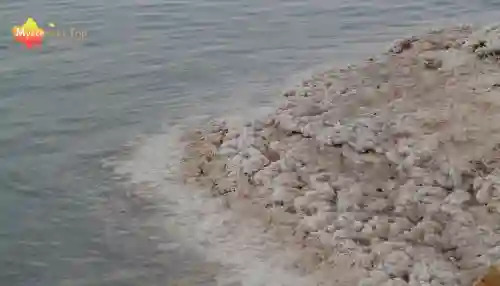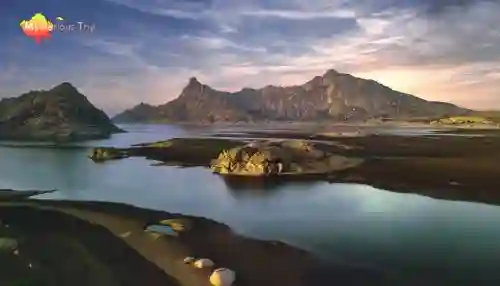
Didwana Lake, also known as Didwana Salt Lake or Didwana Jheel, is a seasonal saline lake located in the Nagaur district of Rajasthan, India. It is the second largest salt lake in the Thar Desert after Sambhar Lake. The lake is a popular tourist place, especially during winter when the water level is high.
History of Didwana Salt Lake:
Didwana Lake was once a freshwater lake, but it gradually became saline over time due to evaporation and the influx of salt-laden groundwater. The lake has been used for salt production for centuries, and it is still an essential source of salt for the region.
Didwana Lake Geography:
The lake is located in a flat, arid region of the Thar Desert. Sandy soils and sparse vegetation characterize the area. Salt flats and dunes surround the lake itself.
The lake is about 10 kilometres long and 5 kilometres wide. The water level in the lake depends on the season. During the monsoon season, the lake is completely filled from the surrounding rivers. The water level then reduces during the dry season.
The lake is a famous place for bird watching. Various birds, including flamingos, pelicans, and herons, can be seen at the lake. The lake is also a popular place for camel safaris. Camel safaris allow visitors to explore the Thar Desert and see the lake up close.
Didwana Lake Ecology:
The lake is home to various plants and animals, including algae, brine shrimps, and flamingos. The lake is also an important breeding ground for migratory birds.
Plants
The lake is home to various algae, including diatoms, green algae, and blue-green algae. The algae are the primary producers of the lake’s ecosystem.
The algae are eaten by brine shrimps, which flamingos eat. The flamingos are a significant attraction for tourists to the lake.
Animals
The lake is also home to other animals, including fish, crabs, and turtles. The fish are a major food source for the brine shrimps. The crabs and turtles help to keep the lake clean by eating algae and other debris.
Migratory Birds
The lake is an important breeding ground for migratory birds, including flamingos, pelicans, and herons. The birds come to the lake to breed in the spring and summer months. The lake provides them with a safe place to nest and raise their young.
Didwana Lake is a vital ecological resource for the Thar Desert. The lake provides a home for various plants and animals and is an essential breeding ground for migratory birds.
Tourism of Didwana Jheel:
Didwana Lake is a popular tourist destination, especially during winter when the water level is high. Visitors can enjoy boating on the lake, bird watching, and camel safaris.
About Salt Production of Didwana Jheel:
Salt produced at Didwana Jheel evaporates the water from the lake and then collects the salt crystals. The salt is used for cooking, preserving food, and making animal feed.
The traditional method of salt production at Didwana Jheel is labour-intensive. Workers collect the salt crystals from the lake and transport them to processing plants. The salt is then washed, dried, and packaged for sale.
In recent years, more modern methods of salt production have been introduced at Didwana Jheel. These methods use solar evaporation ponds to collect the salt crystals. The salt is then mechanically harvested and processed.
The use of solar evaporation ponds has increased the efficiency of salt production at Didwana Jheel. It has also reduced the amount of labour required to produce the salt.
The salt produced at Didwana Jheel is a valuable resource for the local community. The salt is used to support the livelihoods of salt workers and their families. It is also an essential source of revenue for the local government.
The salt production industry at Didwana Jheel faces several challenges, including climate change and competition from imported salt. However, the industry is adapting to these challenges and is expected to be an essential part of the local economy for many years.
Economic Importance
Didwana Lake is a vital economic resource for the region. The lake employs salt workers and fishermen, and it generates revenue for the government through salt taxes.
The lake is also a popular source of salt for residents. The salt is used for cooking, preserving food, and making animal feed.
Environmental Threats:
Didwana Lake faces several environmental threats, including pollution from agriculture and industry and climate change.
Pollution from agriculture and industry is causing the lake to become more saline. This makes it difficult for plants and animals to survive in the lake.
Climate change is also causing the lake to dry up. The lake is becoming more saline, and the water level is decreasing. This makes it difficult for salt workers to produce salt and for fishermen to catch fish.
Conservation Efforts:
There are several conservation efforts that are underway to protect Didwana Lake. These efforts include:
- Reducing pollution from agriculture and industry
- Restoring the lake’s ecosystem
- Raising awareness of the importance of the lake.






